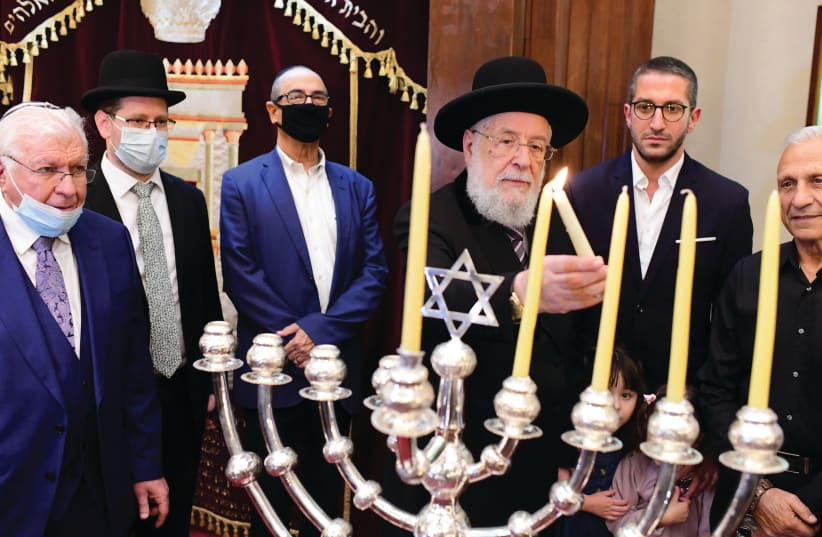The preservation of Hanukkah in Jewish national awareness is an example of the way that any collective memory should be preserved. The discussion on preserving memory is a key discussion in the Jewish world. Memory is one of the elements comprising a coherent identity. These days, there is a significant debate about the preservation of the memory of the Holocaust.
It seems that the preservation of the memory of Hanukkah, according to the Mishnaic and Talmudic sages, contains several fundamental elements, which can teach us how to turn the memory of the Holocaust into a historical memory with timeless significance.
Psychologist Aaron Antonovsky, who developed the Salutogenesis Model in psychology, claimed that a sense of coherence is a personality tendency, expressing the level of a person’s basic and ongoing confidence that what happens in his inner or external environment is expected, understood and can be explained.
The sense of coherence has three main elements: understandability, management and significance, and for the purpose of our discussion correlates with the story of Hanukkah in the “Al Hanisim” prayer said on these days.
The special ceremonies, prayers and blessings on Hanukkah express and explain to the believer the way that God manages a world of darkness; how it is possible to explain and understand darkness, what meaning can be attributed to darkness and light; how one should act and what is the significance of one’s actions. The “Al Hanissim“ canonical text outlines the collective memory, constructs the believer’s sense of coherence over many generations, and is transferred and strengthened through a symbolic system (hanukkiah, oil, light) that intends to intensify the sense of coherence and methodically structure the memory.
There are four main elements that have given Hanukkah the status of eternal memory:
Religious regulation: There is a definite rabbinical commandment to light Chanukah candles.
A heroic narrative: Hanukkah is based on a heroic story of success and hope that enables identification and a desire to belong.
Symbols and rituals: There are physical expressions of preserving the memory of victory and rebellion, such as lighting the candles of the hanukkiah, eating special foods (made with oil) and playing games.
Relevance: One of Hanukkah’s main motifs is the creation of ideological sameness and continuity that are tangibly expressed in the opening sentences defining the religious-ideological corpus language and are articulated in the words, “In those days, in those times.”
Memory is an ongoing structured, dynamic process
MEMORY IS not a static product that is transferred from one generation to the next but is designed in an ongoing structured and dynamic process. Regarding Hanukkah, it has changed and formed throughout the years, according to the varied circumstances of the zeitgeist. The Zionist Movement, for example, formed Hanukkah and used it as a starting point to justify and outline the Zionist narrative in a way that also the non-religious Zionist population senses a connection and identity with the holiday’s messages and the main motifs embedded in it, and lights Hanukkah candles (according to annual surveys).
In retrospect, Jews at that time were torn between their particularistic commitment to observing Torah and mitzvot and the unlimited possibilities open to them for social, economic and cultural integration into the wider universal Greek world. Young women at that time were drawn between their desire to identify with Hannah and her seven sons, who, out of sincere faith, sacrificed her children and refused to bow down to a statue, and Judith, the feminist who acted with initiative and resourcefulness that brought the decapitated head of Holofernes, Nebuchadnezzar’s Assyrian military minister (according to the book of Yehudit), to the camp of Israel. This was a period of extreme ideological and social fragmentation, the signs of which we experience to this very day.
The preservation of Hanukkah and the perpetuation of its memory are the result of a process of socialization and systematic intergenerational transmission of the holiday’s educational messages, which include a firm stand against the encroachment of external enslaving forces, in favor of the construction of an authentic Jewish identity that contains elements sanctifying inner liberation from the enslavement of the soul to external and unimportant objectives. Hanukkah symbolically expresses Israel’s journey and search for the small cruse of oil to cleanse the Temple that will extract our inner candle that will light the way for us to perform Tikkun Olam (fixing up the world).
There is a difference of opinion between Beit Shammai and Beit Hillel regarding the manner of lighting the candles of the Menorah; does one “light and decrease” or “light and increase?” In other words, do we light all the candles on the first day and reduce the number of candles each day, or perhaps, in a systematic constructivist process, do we add a candle each night until we light all the candles of the hanukkiah?
Our sages claim that the dispute between Beit Shammai and Beit Hillel underlies two distinct educational concepts regarding the question of how to deal with evil in this world: should we “burn the club down” and slowly “extinguish the flames” or should we gradually add light until darkness is eliminated. The Halacha ruled according to Beit Hillel: “One lights and increases” which means that adding light and more light and more light will bring the greatest light to the world.
Empirical studies show that success in education is achieved by adding good. The battle for the individual’s spiritual freedom and purification of their soul in anticipation for the liberation from slavery and exile triumphs by adding light. May we always know how to add light and free ourselves from the chains that hold us down from achieving inner freedom and purity. Even in our times, we need a small cruse of oil to cleanse the temple of our souls.
The writer is dean of the Faculty of Education and head of the Sal Van Gelder Center for Holocaust Research & Instruction at Bar-Ilan University.
